There’s a page on your site that’s a goldmine waiting to be tapped. It’s not your product page. Nor is it your checkout page…
It’s your thank you page.
Get this page right and it becomes an invisible selling machine for your online store. But get it wrong, and you risk getting your relationship with new subscribers off to a rocky start.
The problem, though, is many business owners massively underutilize their thank you page.
They don’t ask prospects to take action—when they’re most primed to do so—and thus, forgo countless opportunities to increase revenue. Worse, most aren’t even aware they’re doing it.
Well, that changes right now.
In this article, I’ll walk you through the psychology behind why thank you page converts well (hint: it’s not what you think). I’ll also show you how to get more mileage out of your thank you page by following nine best practices today’s pros are using.
Let’s get started.

9 Thank You Page Ideas to Inspire Your Own
What Is a Thank You Page?
A thank you page is the page visitors, leads, and customers see after joining your email list, submitting a form, or making a purchase. Think of a thank you page as a way to turn new visitors into warm leads and returning customers into repeat buyers.
1. Ask for Referrals
Generating new business is an ongoing challenge for many online stores.
But there’s one acquisition channel that, when consistent, is a predictable source of revenue:
Referrals.
In fact, according to a recent survey by Ogilvy, 74% of consumers identify word-of-mouth as a key influencer in their purchasing decision.
It’s no surprise, then, that many businesses ask you to refer a friend or family member when you sign up.
Take James Clear for example. With over 700,000 monthly readers and more than 350,000 email subscribers, James’s blog has gone from a blank WordPress installation to one of the most popular single-author blogs in the world in less than three years.

One of the ways that he’s been able to achieve that growth is by asking for referrals on his thank you page.
After joining his weekly newsletter, James redirects you to a page where he asks you to refer his work to a friend:
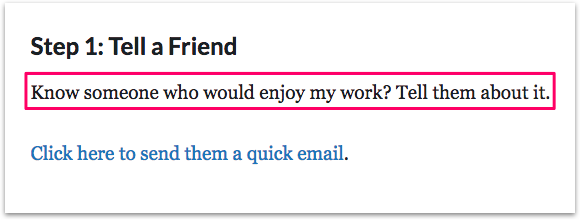
What’s more, he makes it super simple to do by including a pre-written email:
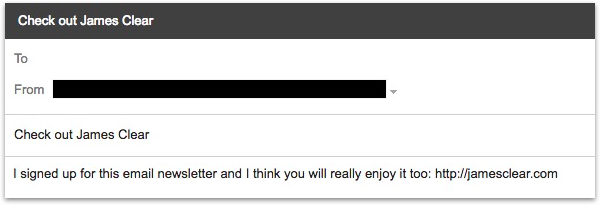
All you have to do is click the link and press “Send” and James increases his likelihood of acquiring a new reader (and perhaps one day, a customer).
Takeaway. Ask new readers to refer you to a friend using a pre-written email.
2. Ask for Social Shares
The requests you ask of your audience vary depending on factors such as demographics and psychographics.
(Teenagers, for example, are more likely to share something on social media than send an email referring to service as we saw in the previous example.)
Put another way, if you know most of your reader’s time is spent on Facebook, then asking them to ‘Like’ your page is easier than asking for a referral.
Let’s imagine for a moment that your goal isn’t to grow a following on social media but to push more targeted traffic through your marketing funnel.
How could you encourage more social shares?
One option would be to leverage your readers’ following.
Some influencers, like Brennan Dunn from Double Your Freelancing, ask new email signups to share his popular email course:
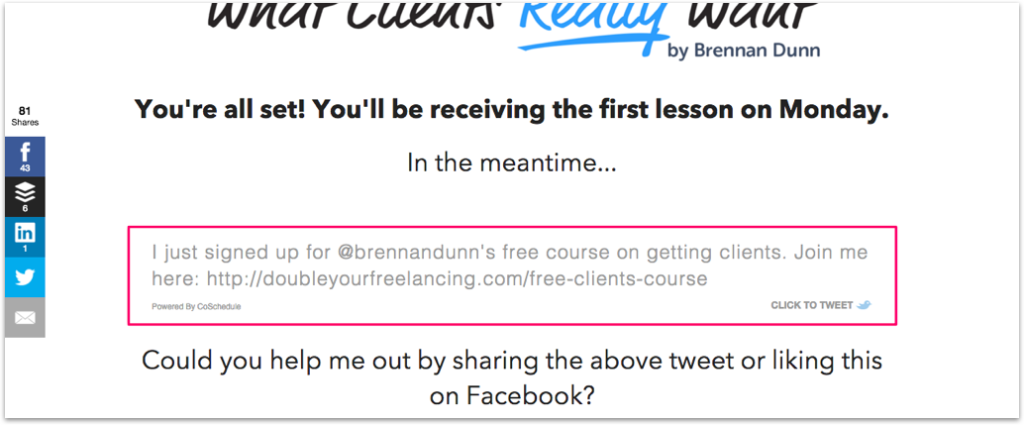
Others, like Michael Hyatt, incentivize the share by offering a chance to win a prize:
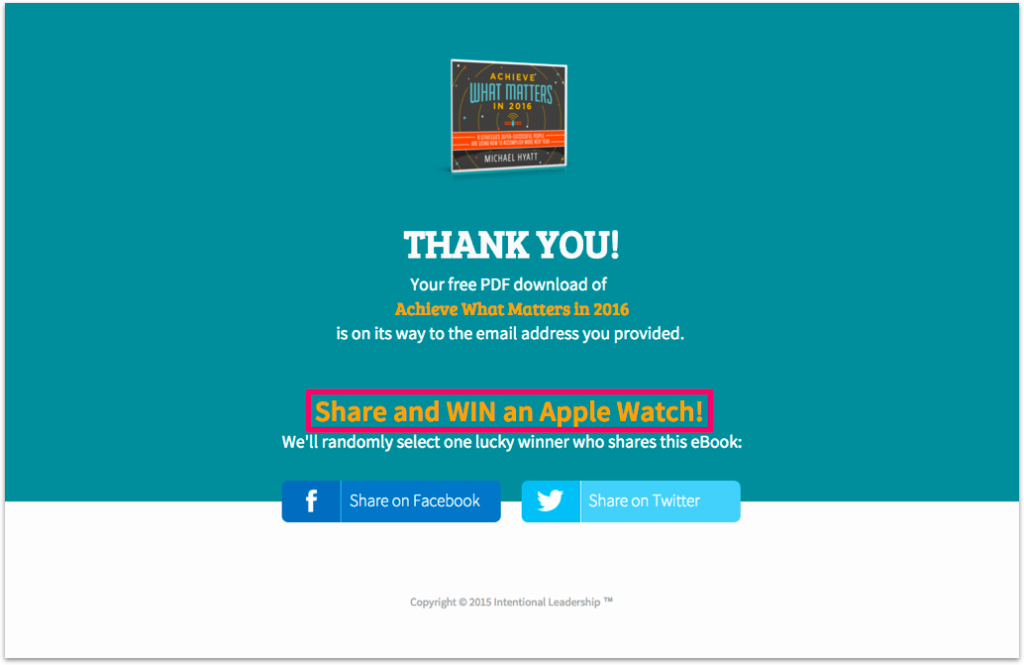
To learn more about how to ask for referrals on your thank you page, check out Smart Bribe from Growth Tools.
Takeaway. Ask new readers to share an important page on their favorite social media channel. (Pro tip: give a reason why you’re asking for the share.)
3. Demonstrate Authority
Earlier in the post, we talked about the power of commitment and consistency: our tendency to be consistent with actions we’ve already taken.
But there’s another best practice that amplifies these principles further:
The principle of demonstrating authority.
Many businesses choose to position themselves as the go-to leader in their marketplace for this very reason: when you’re a recognized expert in your field, you don’t need to prospect for new business—customers comes to you.
It’s important to remember, though, that authority isn’t demonstrated by what you say about yourself or your company. Rather, it’s demonstrated by what other authorities say about you.
“As featured in” sections on homepages are a good example of this.
Here’s an example from Ramit Sethi from I Will Teach You to Be Rich:
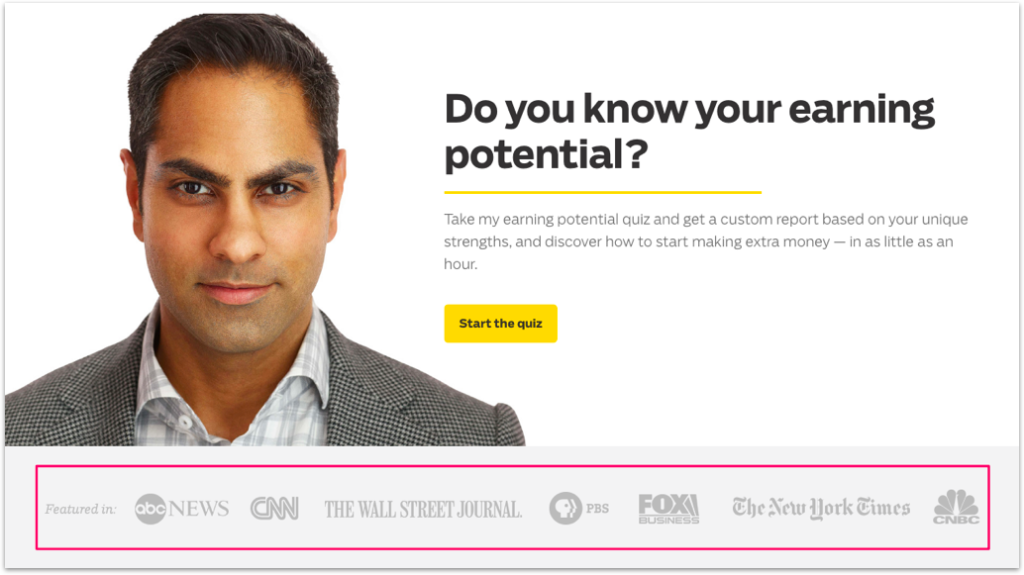
This prompts something to the effect of:
“Wow, if he’s been featured in ABC News, CNN and The Wall Street Journal, he must be an expert!”
Often, you’ll notice influencers using media mentions on their landing pages and even their checkout pages.
But the savviest business owners include them throughout their marketing.
Take Scott Oldford, for instance.
He demonstrates authority on his landing page, optin page, and thank you page.
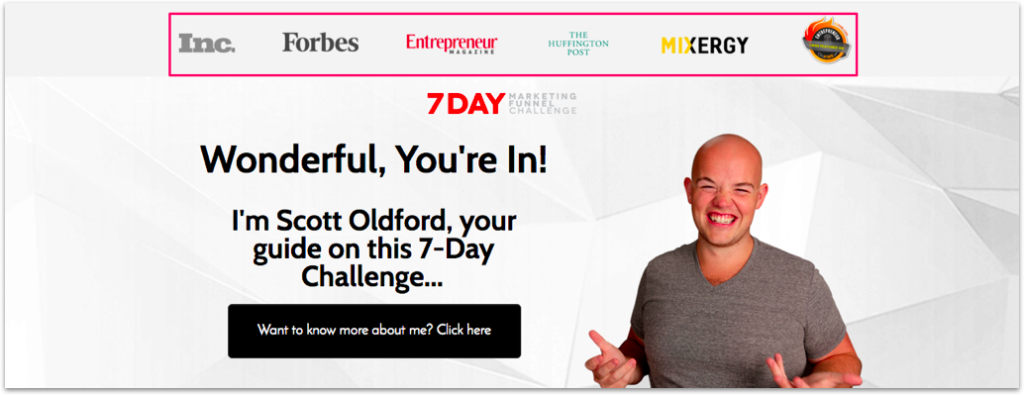
Knowing that the Internet marketing industry is plagued with charlatans claiming to be experts, Oldford differentiates himself by “borrowing” authority from the major media outlets that have featured him.
Trust isn’t built once, remember—it’s built gradually over time as the buyer moves through each stage of the buyer’s journey. So, keep that in mind when you’re positioning yourself as an expert in your field.
Takeaway. Include media mentions, reviews, and testimonials on your thank you page as well as other important pages on your site.
4. Offer a Discount
Having a discount strategy is an integral part of many ecommerce businesses.
But it’s important to know when to offer them.
Do it often enough and your customers come to expect it. Do it sparingly and your customers can jump to a competitor.
Luckily, there’s a silver lining: using discounts to reward good behavior.
Naturebox illustrates this strategy perfectly.
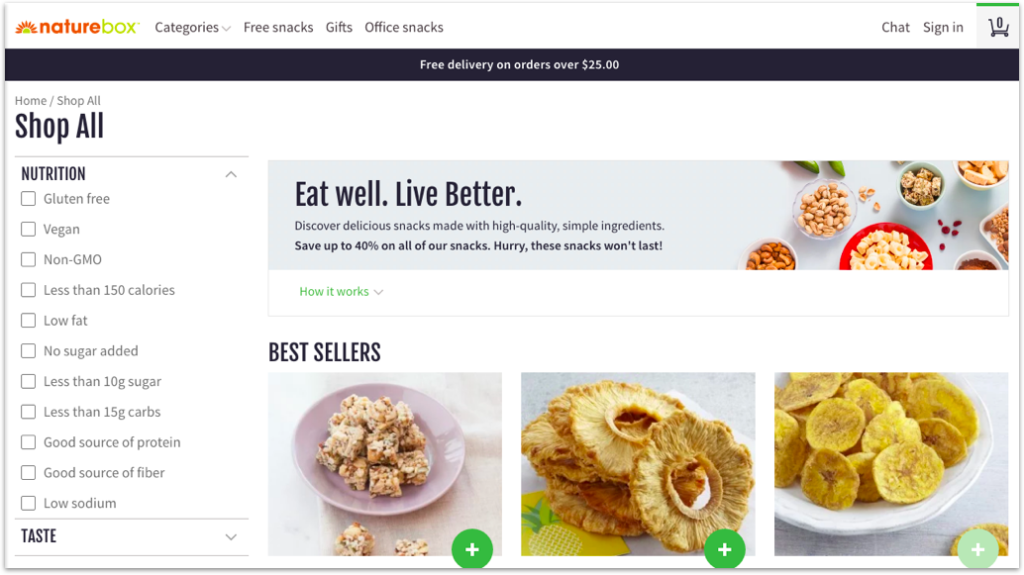
If you choose to subscribe, you’re rewarded with a free sample of one of their bestselling items. (Note the scarcity at the bottom to increase the likelihood the reader will claim their free gift):
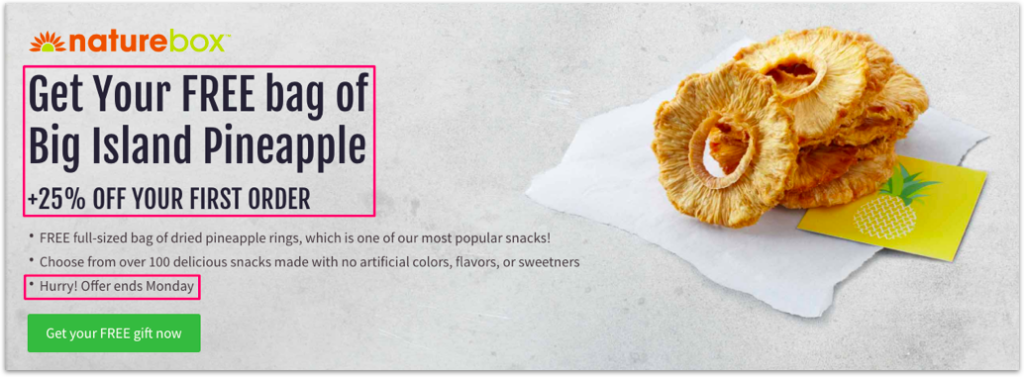
The real magic, though, is the secondary benefit:
“+25% off your first order.”
Offering a secondary benefit doesn’t just reward customer loyalty; it also reduces churn.
Use it wisely.
5. Qualify and Nurture Leads
Not all readers are created equally.
At any time, a reader is at different stages of the buyer’s journey.
Some are only beginning to become aware they have a problem. Some have defined their problem and are evaluating a viable solution. While others have decided on a solution and are ready to buy.
The question is, how do you cater to all types of readers?
You offer different choices for different readers.
Take marketing giant HubSpot, for example.
When you opt in, you’re given a choice on what to do next based on where you are in the buyer’s journey. If you’re only at the beginning of your journey and want to learn more about your problem, you can read a free resource on the subject:
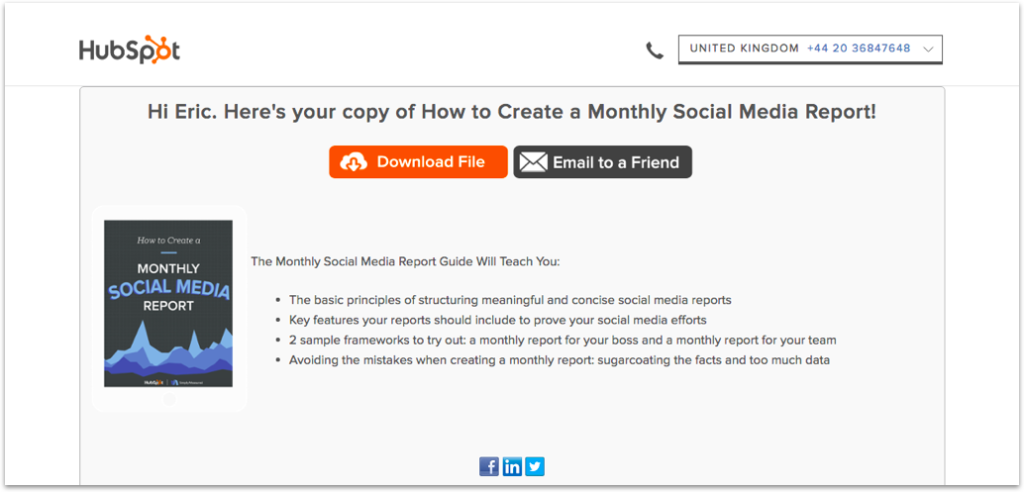
But if you’re further along in your journey and are considering making a purchase, you can take a free assessment:
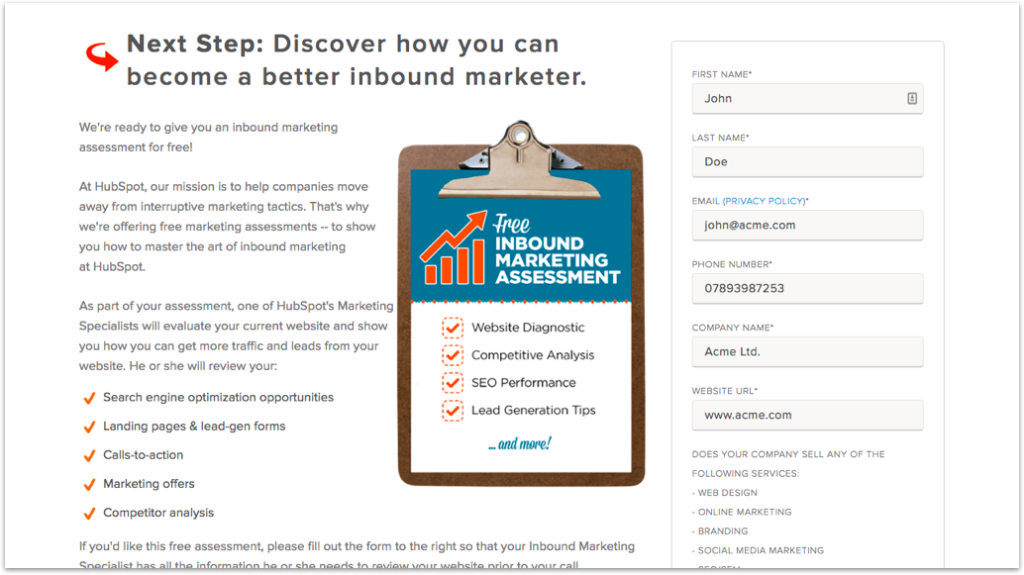
Give people a choice and they’ll know which path is right for them.
Takeaway. Nudge subscribers along the buyer’s journey by offering different content types at different funnel stages (e.g. a webinar, free trial, etc.).
6. Link to Your Most Popular Content
Let’s stop for a moment and consider an important truth:
If a reader opts in on your site, it’s because either they got value from your content (i.e. it solved a problem for them), and/or, they believe you will continue to deliver value in the future.
With that in mind, it’s important that you meet that expectation and help prospects on their journey to purchasing from you to the best of your ability.
Pat Flynn, from Smart Passive Income, understands his audience better than most marketers. After opting in for his newsletter, Pat offers a series of eBooks solving a variety of popular pain points his audience has:
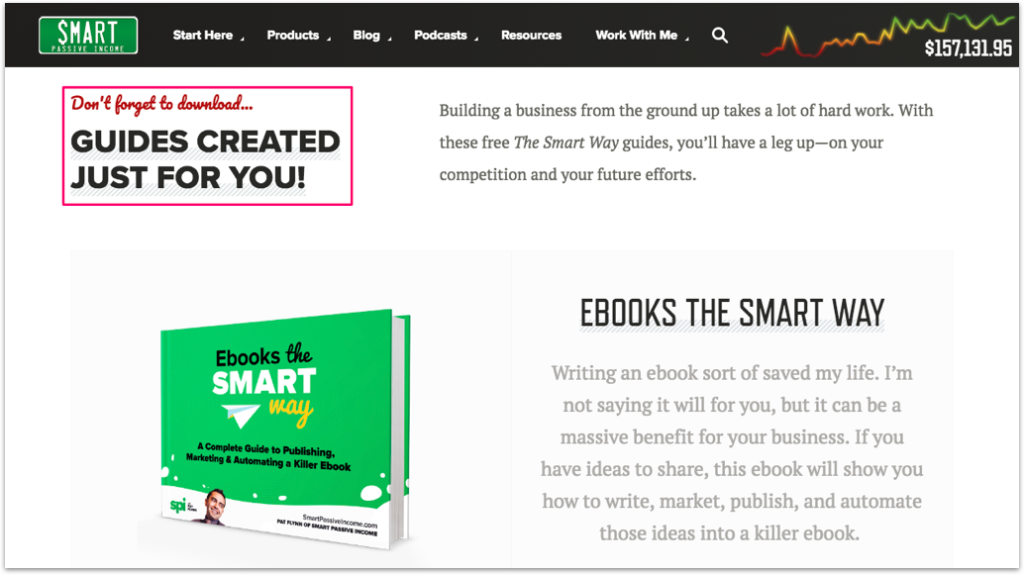
Groove, on the other hand, link to their most popular content based on social shares and comments:
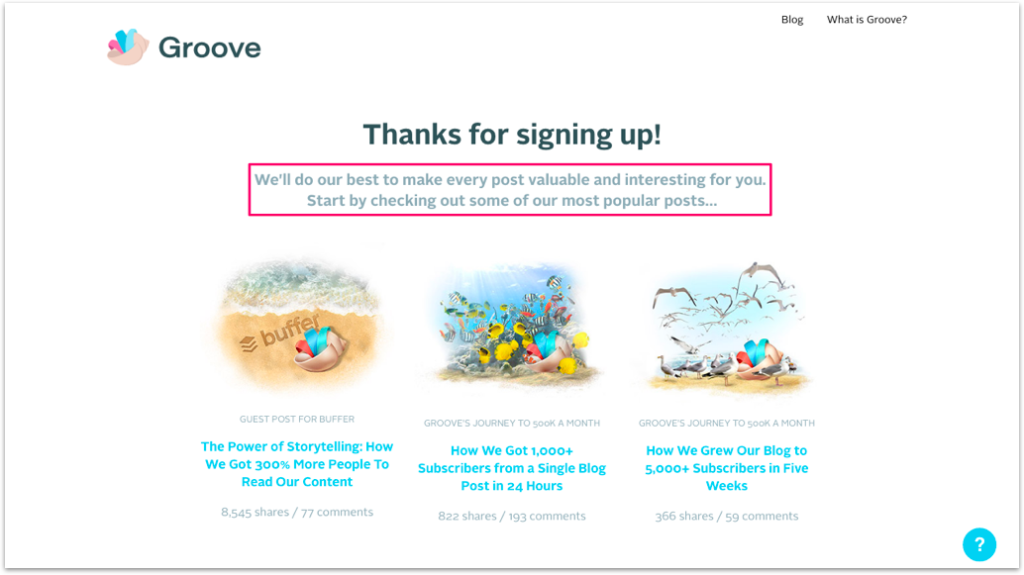
Linking to their most popular content, not only benefits the reader, but it also benefits the blog.
The more eyes on their content, the higher the link-building opportunity and the better their content will rank in the search engine results pages (SERPs).
Win. Win.
Takeaway. Link any content you want to rank well for on your thank you page. There’s no guarantee it will improve your position in the SERPs, but it might influence it.
7. Upsell a Product or Service
Paid traffic is fast becoming an integral part of many online marketing campaigns.
And for good reason:
It’s highly effective.
Facebook Advertising, for instance, has been known to deliver a 5, 10—even 13x return on investment for ecommerce stores.
But let’s be honest, paid traffic is expensive.
And if you’re not recouping your costs when acquiring a new lead, you’re losing money.
So, how do you ensure you don’t break the bank?
Offer a self-liquidating offer.
Simply put, a self-liquidating offer is a low-ticket item that covers your ad spends.
Digital Marketer offers self-liquidating offers on many of their thank you pages to not only recoup their ad costs but also to convert new subscribers into customers:
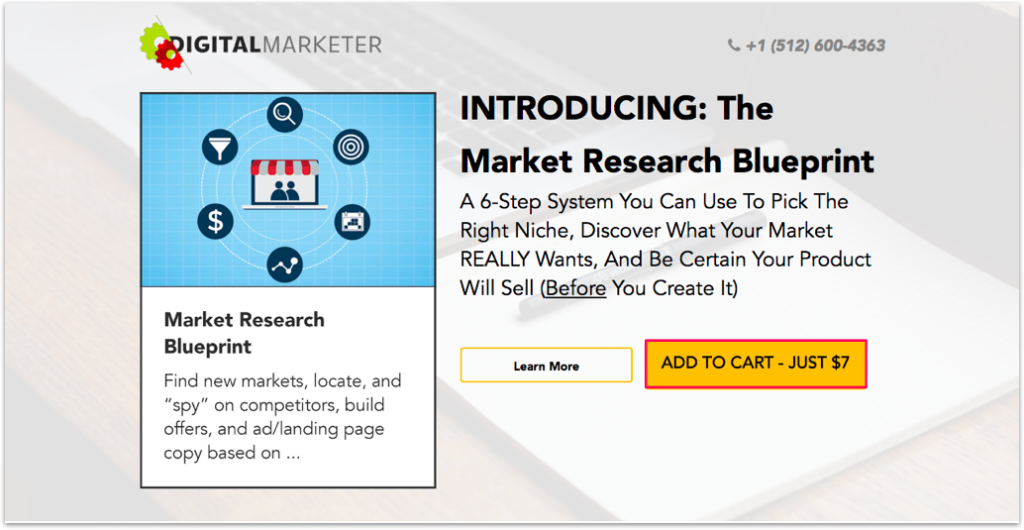
Granted, you won’t convert everyone (not yet, anyway), but you will break even on some of your new acquisitions.
Takeaway. Offer a self-liquidating thank you offer on your confirmation page if you’re paying for traffic.
8. Encourage Engagement
We all have a need to connect.
We want to meet with like-minded people and most importantly, feel like we belong…
And there’s no better way to feel like we belong than joining an online community.
The problem, though, is rarely, if ever, do you get a chance to interact with the tens of or hundreds of thousands of other readers a blog prides itself on.
That is unless you get an immediate introduction when you sign up.
When you join Derek Halpern’s community at Social Triggers, you’re asked to “Like” his Facebook page and introduce yourself (notice the social proof to coax you further):
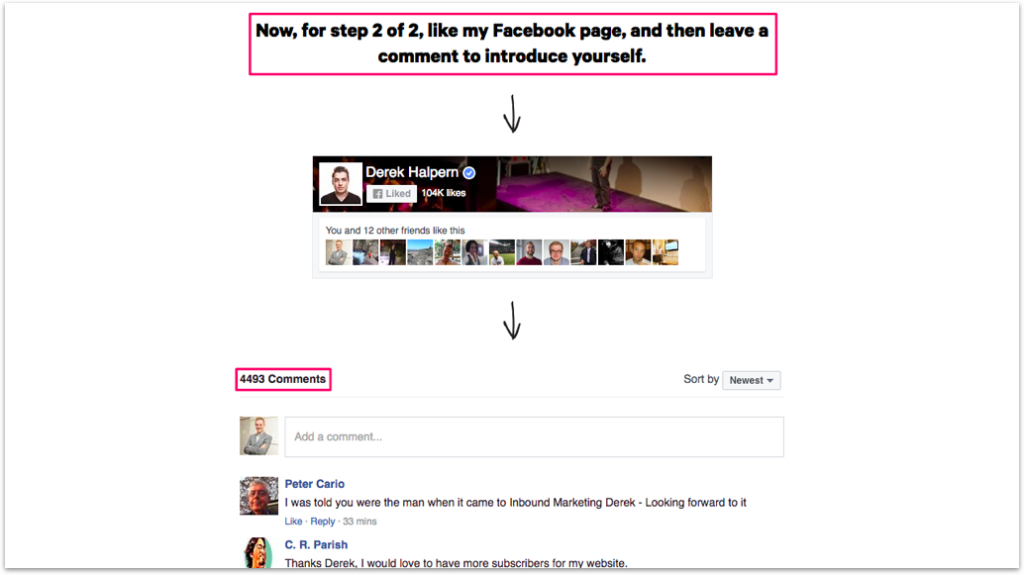
From there, Derek asks his readers questions on his Facebook page, further nurturing his relationship with his community:
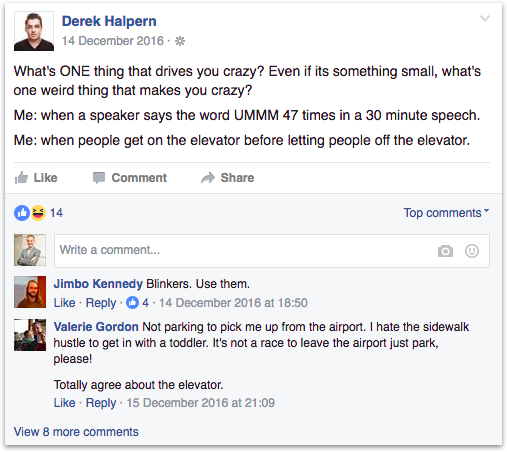
Do this consistently, and you build a thriving community of loyal readers and customers.
Takeaway. Include a Facebook or Disqus comment box on your thank you page and ask a question to encourage engagement.
9. Conduct a Survey
Surveying your audience gives you great insight into what makes your audience tick. You learn about their goals, desires, and pain points which, in turn, helps you craft highly targeted marketing messages.
The problem, though. is many businesses get it wrong.
At best, they ask the wrong questions and at worse, they ask on an overpopulated platform (like Facebook).
What savvy business owners do, instead, is ask readers immediately after they’ve expressed an interest in their business.
After all, if you join a company’s newsletter, you probably have a problem top of mind.
Neil Patel knows this better than anyone.
When you enroll in Neil’s webinar (his lead magnet), he redirects you to a thank you page where he invites you to complete a short survey:
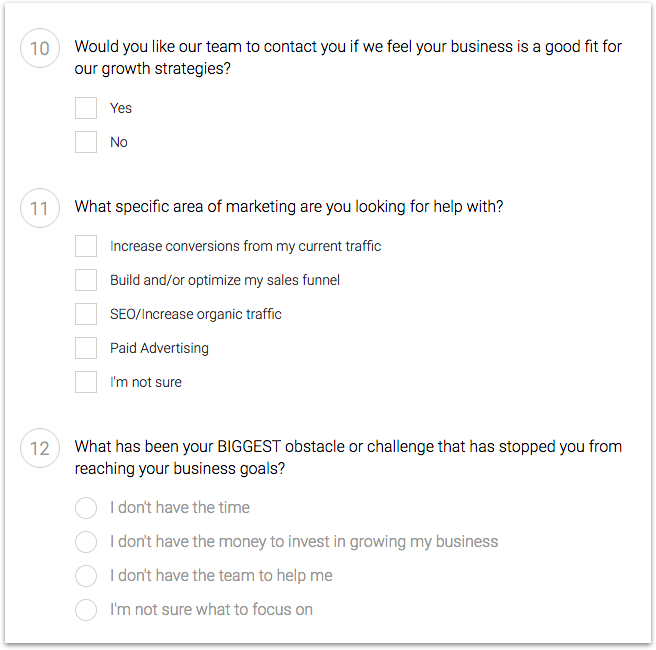
While Neil is mostly qualifying prospects for a strategy call, he’s still getting valuable feedback from his readers on what they’re struggling with and how he can help.
Takeaway. Ask your readers what their goals and struggles are and build your content marketing strategy around what they’re looking to learn more about.

Conclusion
If there’s one thing worse than neglecting your thank you page, it’s overusing it.
I’ve outlined above nine of the best thank you page best practices available—but you need to be selective.
Don’t overwhelm your new subscriber with requests to refer a friend, follow you on Twitter, complete a survey, etc. Instead, focus on one best practice, test it, and iterate as needed.



